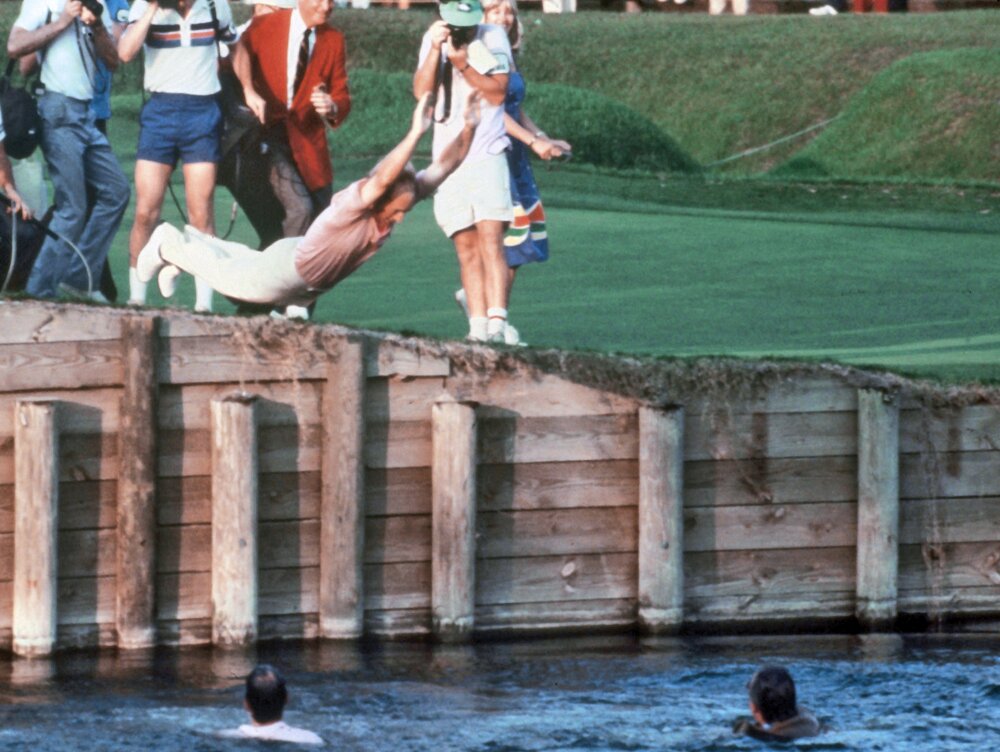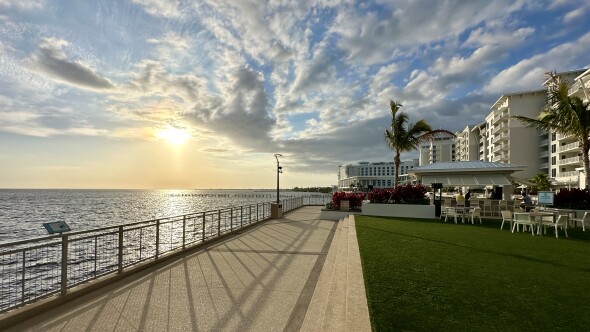Paul Burke “Pete” Dye, Jr., passed away Thursday morning. He was 94 years old.
“While I am often portrayed today as a wicked designer from hell,” Dye wrote in his 1995 autobiography, Bury Me In A Pot Bunker, “I am in fact from the quiet midwestern town of Urbana, Ohio.”
From his Middle American upbringing, Dye embarked on a more than half-century career in golf course design and construction, leaving an eternal mark on the game through the design of several of its greatest courses.
A 1963 pilgrimage to Scotland brought Dye to Royal Dornoch Golf Club, a links that also inspired great classic architect Donald Ross. Dye’s penchant for pot bunkers and playing strategies that reveal themselves only over repeated rounds can be traced to this trip.
Close to home, Dye designed such influential layouts as The Golf Club in New Albany, Ohio; Mystic Rock at Nemacolin Woodlands Resort in Farmington, Penn.; and Crooked Stick Golf Club in Carmel, Ind., a course he continued to refine throughout his life.
As his notoriety grew, Dye designed layouts farther afield, including the TPC Stadium Course at PGA WEST in La Quinta, Calif.; and the Teeth of the Dog at Casa de Campo Resort in the Dominican Republic. He even designed the only golf course in Israel: Caesarea Golf & Country Club.

Few golf course architects have exhibited a better understanding of how to challenge the best players than Pete Dye, who was himself an accomplished player, competing in the U.S. Open in 1957 and winning the Indiana Amateur in 1958.
Dye’s best-known American course is the Stadium Course at TPC Sawgrass in Ponte Vedra Beach, Fla., host of the annual Players Championship. Carved out of former coastal swampland, Dye fashioned one of the great championship venues in golf and ushered in the era of “stadium” course design, with raised mounds at strategic points meant to give spectators the best possible vantage point on tournament action.
Despite recent advances in golf equipment technology that have threatened several great championship venues with obsolescence, courses like Harbour Town Golf Links in South Carolina, Austin Country Club in Texas and TPC Louisiana continue to test elite professional golfers every year as annual PGA Tour stops.
Dye-designed major championship venues include Oak Tree National in Oklahoma and Crooked Stick. Dye’s Whistling Straits in Wisconsin has hosted three PGA Championships and will host the Ryder Cup this September. The Ocean Course at Kiawah Island Golf Resort hosted the 1991 Ryder Cup, the 2012 PGA Championship and will host the PGA Championship again in 2021.
Rather than pure power, Dye’s golf courses reward strategic thinking and play, especially off the tee, as nasty hazards often guard angled fairways along the best route to the green. Considering the diverse styles of players who have won significant championships on his golf courses, it is clear that they do not favor any one style of play. Mental toughness and guile are the most important weapons against a Dye course.
Dye’s father “Pink,” an avid player in his own right, built the first nine holes at Urbana Country Club in 1923. Indeed, golf course design would become a family birthright. Pete’s own sons, P.B. and Perry, are in the business. So is niece Cynthia Dye McGarey.
But Dye’s first and greatest collaborator was his wife of 68 years, Alice, who passed away at the age of 91 in early 2019.
An accomplished amateur player in her own right, Alice was both a muse and a moderating influence on several of Dye’s designs. The playability of his courses for women can be attributed to her own deep understanding of what makes golf courses compelling. That said, it’s Alice who is to thank (or blame) for the island-green 17th at TPC Sawgrass.
Contemporary golf course design is a who’s-who of former employees of and collaborators with Dye. Jack Nicklaus’ first foray into design was with Dye, when the pair collaborated on Harbour Town in 1969. Tom Doak spent several years under Dye’s tutelage, involved in the construction of South Carolina’s Long Cove Club and other courses. Bobby Weed is a Dye disciple as well. Bill Coore, whose practice with Ben Crenshaw comprises one of the world’s most respected golf design firms, got his start with Pete Dye. So did prominent Canadian architect Rod Whitman.
Another architect who cites Dye as an influence is also a major champion: Jerry Pate, who won the very first Players Championship played at the Stadium Course at TPC Sawgrass in 1982. Five years later, he collaborated with Dye and Weed to build the Dye’s Valley Course there.
“Pete had the most challenging strategies of any designer I’ve ever seen,” Pate said of Dye. “He did more for my golf career in the design business than anybody ... watching how he did it. He was a master.”












I was playing in the Sr-Am Qualifier at Crooked Stick in 2017 when I met The Man. He took it upon himself to ride around in his cart, thanking players and asking our opinion of the course and it's condition. What a gentleman. Now he'll have all the time and tools he needs to bring his unique style to his latest design "Heaven's Gate".
Pete's courses were not meant for the boom and gouge crowd. This is target golf. It's hard to get use to playing this style day in and day out.
Our local course Firethorn Country Club has a lot of member turnover because of this.
Lincoln NE
This genius will be missed. But his memory will live on....having played a few of his courses..he is simply outstanding...those who have never had the treat..take the time..you will never regret it!!!
Amazing talent...wonderful people .It was a pleasure to have know them
Great grand Dye never die, they just fade away watching over tournaments play!
Mr. Gavrich,
This is a beautifully written and insightful tribute to Pete Dye and the importance and influence of his work. Not having played a Pete Dye course in many a year, I honestly can't recall those few courses of his I have played in much detail. But I remember how challenging Mr. Dye's courses were, though not unfair. Yet it is also clear to me, having played his sons' courses recently (not to mention seeing so many of Pete's courses on TV), what makes the general 'Dye style' so compelling: to this point, your emphasis on the strategic aspects of his work (angularity; options that require a player's careful consideration; almost a chameleon-like ability to shift gears and even stylistic choices, et al.) is dead on the mark. Touring pros love to complain about Dye hazards and his tough holes, yet isn't that exactly what makes playing his courses so fascinating? Does every course, and every hole on it, have to be utterly fair, anyway? Genuinely tough shots are part of the allure of this game.
The influence upon architects like Tom Doak has also been important, in my opinion, in the world of golf course architecture. I recently reread Doak's classic "The Anatomy of a Golf Course," in which Dye's influence on strategic thinking clearly shows up in Doak's entire approach to design.
I believe Mr. Dye was also in the insurance business. My father-in-law, while working at Indianapolis Methodist Hospital, purchased a policy from him. Pete is now joined with his wife and may both Rest In Peace.